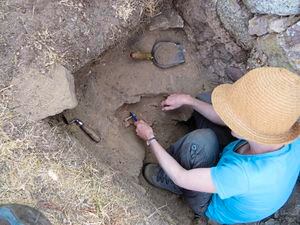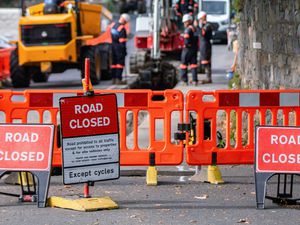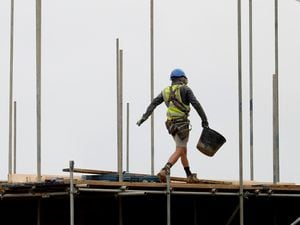Archaeologists throw light on mystery of baby skull find
ARCHAEOLOGISTS believe they have solved the riddle of a baby’s grave unearthed in the gatehouse of Alderney’s Nunnery.

The team, led by director of heritage services Dr Jason Monaghan, had been investigating the original footprint of the Roman fort’s gatehouse as part of their summer dig last year.
They cut a small trench into the top of the gatehouse and that proved that most of the Roman floor had been cut away when the passage was widened in around 1793.
But there was a far more surprising discovery waiting for them.
‘In the side of this trench we could see what looked like a crab shell,’ said Dr Monaghan.
‘Expanding the trench slightly, it became clear it was the skull of a child in a shallow grave. The top of a gate tower is the last place I’d expect to find a burial, so I called the police in case this was a crime scene.’
Once the police had visited the site and given permission, the grave was carefully excavated by archaeologist Jenny Cataroche, who specialises in the study of human bones.
Ms Cataroche said that, while it was not possible to determine whether it was a boy or a girl, the bones were consistent with a gestational age of 38 to 40 weeks, meaning it was a baby carried to full term.
‘There were no grave goods or clothing remnants found with the skeleton so it is most likely the baby was wrapped in a blanket or shawl, of which nothing remains,’ she said. ‘It was placed on its right side with knees drawn up to the chest and hands near the face.
‘The unusual location of the burial – not in a churchyard – suggests that the baby was unbaptised, perhaps stillborn. We are probably looking at death linked to complications of pregnancy or birth which, sadly, would have been much more common in the past.’
The team established that it could not be a Roman burial as the grave was cut into the rebuilt part of the gatehouse. The fact that it was completely skeletonised indicated it was not recent. But given that the gatehouse was rebuilt around 1793, the burial had to be after that date.
Bone samples were sent to a laboratory in Florida for carbon-14 dating. The results suggested a most likely date of 1820, give or take 30 years, for the burial.
The Nunnery was used as a barracks for British soldiers in the early part of the 19th century and was a military hospital in the middle of the century.
Once it was clear the burial was not recent, the police consented to the archaeologists taking control of the case.
‘Our best guess is that the baby was born to the wife or girlfriend of one of the garrison. Whether the child was stillborn, or died soon after birth, we can’t tell.
‘At that time unbaptised or illegitimate babies might be hurriedly disposed of, but this baby was clearly cared about as its parents chose to bury it in a prominent place in the fort.’
The Nunnery is located on Longis Bay in Alderney and is the site of Britain’s best-preserved Roman small fort. At times in its history it has been the home of the Governors of Alderney, a gun battery and barracks for the British Army, a military hospital, married quarters, a farm and a German resistance point.
Excavations have taken place over the last decade supported by Guernsey Museum and the Alderney Society.





